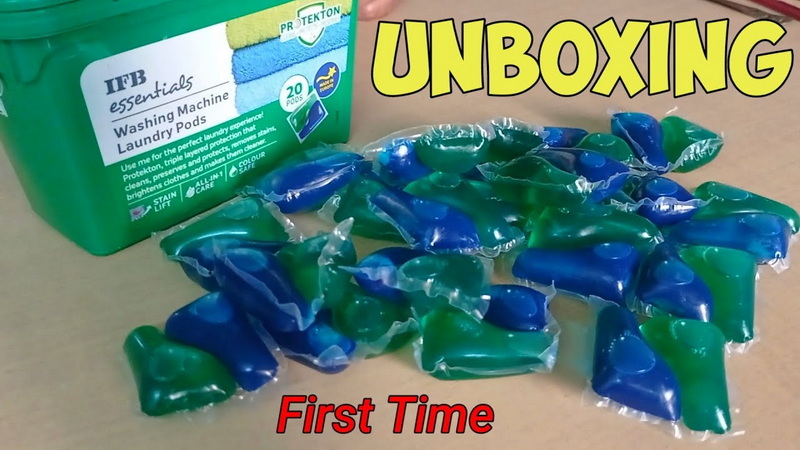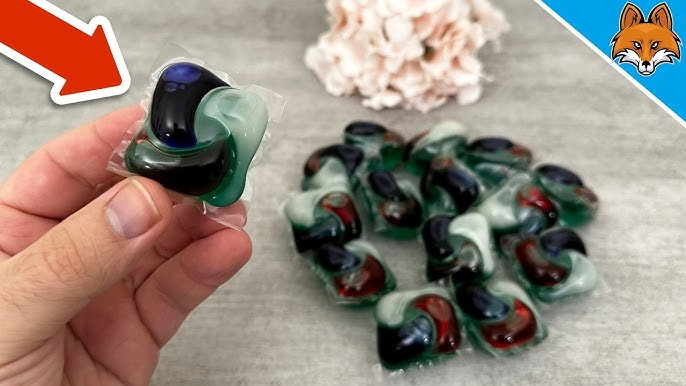Dongguan UFine Daily Chemical Co.,Ltd.
- All
- Product Name
- Product Keyword
- Product Model
- Product Summary
- Product Description
- Multi Field Search
Views: 222 Author: Tomorrow Publish Time: 11-06-2025 Origin: Site











Content Menu
>> Heavy soil or whitening needs
● Special considerations for top-loaders and high-efficiency (HE) machines
● Allergen and fabric considerations
● Maintenance and troubleshooting
● Environmental considerations
● FAQ
>> 1. Can I use IFB laundry pods in both front-loading and top-loading machines?
>> 2. Should I use one or two pods per load?
>> 3. Where should I place the pod in the washing machine?
>> 4. How can I prevent pods from not dissolving properly?
>> 5. Are IFB pods safe for sensitive skin or children?
IFB laundry pods offer a convenient, pre-measured way to clean clothes, save time, and minimize dosing errors. This comprehensive guide explains how to use IFB laundry pods effectively across common washing scenarios, including standard, delicate, heavily soiled, and high-efficiency machines. It also covers safety, storage, and best practices to maximize results and protect fabrics. The goal is to provide practical, step-by-step instructions that you can apply to real-life laundry tasks, along with troubleshooting tips and considerations for different fabric types and water conditions.

IFB laundry pods are dissolvable detergent packets designed to release cleaning agents during the wash cycle. Each pod contains a pre-measured amount of detergent formulated for typical loads. Pods are designed to work with standard washing machines and most wash programs, though performance can vary with water hardness, load size, and fabric type. The pre-measured design helps reduce guesswork and minimizes the risk of overdosing, which can cause excessive suds, residue on fabrics, or environmental impact. Understanding the composition of pods can help you select the right product for your needs, including variants that are optimized for color protection, heavy soils, or delicate fabrics.
- Determine load size: For small to medium loads, one pod is usually sufficient. For large or heavily soiled loads, consider two pods only if the product instructions permit. If you frequently wash bulky items, verify you have enough space in the drum for movement, as overcrowding can hinder dissolution.
- Fabric care: Use pods appropriate for the fabric category (cotton, synthetics, delicates). Some pods are formulated for general clothes, while others are tailored for specific fabrics or color protection. For blended fabrics or items with special finishes, follow the garment care labels and choose a pod designed to be gentle on those materials.
- Water hardness: In very hard water areas, a higher dose may be recommended by the manufacturer, or a booster product may be used in combination with the pods as directed. If you live in a region with hard water, you may notice mineral buildup on clothes or reduced cleaning efficacy over time; consider using a water conditioner or an additional rinse aid if advised by the pod manufacturer.
- Color and scent preferences: If fragrance sensitivity is a concern, look for fragrance-free or low-allergen pods. Some people prefer pods with color-safe formulas to help maintain brightness and reduce color transfer, especially for mixed loads.
(1) Check garments
- Sort by color and fabric type to prevent dye transfer and fabric damage.
- Treat stains beforehand if needed, following garment care labels. Pre-treating stains can significantly improve outcomes on tough soils or greasy residues.
- Inspect for items with special care requirements, such as wool, silk, or garments with beading or delicate seams. Reserve those for cycles specifically designed for delicate fabrics, using the appropriate pod variant if available.
(2) Load the washing machine
- Do not overload the drum. Leave adequate space for the clothes to move and for the pod to dissolve properly.
- For front-loading machines, ensure the door seal is clean and that the drum is not overloaded. A crowded drum can prevent full dissolution and lead to residue on clothing.
- Consider the layout of heavy items. Place heavier pieces at the bottom for balanced loading, and avoid placing too many bulky items on top of lighter fabrics.
(3) Insert the pod
- Place the pod directly into the drum before adding clothes, not in the detergent drawer unless the product specifies this method. Placing it in the drum ensures consistent dissolution and avoids entrapment in clothing.
- Do not place the pod on top of wet clothes, as it may dissolve unevenly. If you forget, you can pause the machine mid-cycle after the initial fill to reposition, but this may not be possible on all machines.
- If using a pre-wash or soak phase, ensure the pod is still in contact with water long enough to dissolve before the main wash begins.
(4) Add clothes
- Add clothes on top of the pod to aid even dissolution. This helps the pod sink and disperse as the cycle begins.
- Ensure delicate items are balanced with sturdier items if using a mixed-load program to minimize fabric wear and maintain even distribution of the detergent.

- Suitable for everyday cottons and mixed fabrics.
- Use a normal or regular cycle with appropriate water temperature as per garment care labels.
- Pods designed for general use should perform well under these settings. If you notice residue, consider adjusting the program or dosage for future loads.
- Use a delicate cycle with cooler water.
- Check garment care labels for temp guidelines.
- Pods labeled for delicate fabrics can help protect fibers when used as directed. For ultra-delicate fabrics, you may opt for a specialized detergent variant or a shorter wash cycle to minimize friction.
- For heavily soiled items, some pods claim enhanced formulation for tough stains. Pre-treat persistent stains with a stain remover or spot treatment in addition to the pod.
- Do not use more than the recommended dose; instead, consider pre-treating tough stains or using a longer wash cycle if permitted. Soils with grease, oil, or clay may benefit from a longer or warmer wash, depending on fabric tolerance.
- For colored fabrics, use cold or warm water in accordance with care labels.
- Avoid high-temperature cycles with delicate dyes to minimize color fading. If color transfer concerns arise, run a short extra rinse cycle to ensure dyes are washed away.
- Cold washes are energy-efficient and can protect color vibrancy but may require longer cycles for tough soils.
- Warm washes improve detergent activity for greasy soils but may affect heat-sensitive fabrics. Use warm temperatures for sturdy fabrics that tolerate heat and have staining that benefits from higher solubility of detergents.
- HE machines require low suds and complete dissolution. Most pods are formulated to work with HE machines, but always verify the product instructions.
- For top-loaders without an agitator, place the pod in the drum as directed to ensure it dissolves evenly. Some older top-loaders may have different wash behavior; adjust accordingly if your machine manual provides guidance.
- Keep out of reach of children and pets.
- Store pods in a dry, cool place away from moisture to prevent premature dissolution.
- Do not puncture pods or ingest contents. If contact with eyes or skin occurs, rinse thoroughly with water and seek medical advice if irritation persists.
- Do not reuse empty pods. Dispose of empty packaging according to local guidelines to minimize environmental impact.
- Some detergent pods contain fragrances or additives that may irritate sensitive skin. If you or household members have sensitivities, choose hypoallergenic or fragrance-free variants and verify ingredients.
- For wool, silk, or other specialty fabrics, check the care labels and choose pods designed for delicate or specific fabric types. When in doubt, perform a small test wash on an inconspicuous fabric area.

- Dissolution issues: If the pod does not dissolve completely, rerun the wash on a shorter cycle with a cold or warm setting, or check for residual powder in the drum. Ensure the drum is not overloaded and that the pod was placed correctly in the drum.
- Residue on clothes: If you notice residue, ensure the machine is not set to an improper wash temperature or rinse setting. Clean the detergent drawer and door seals periodically. Run a maintenance cycle or use a machine cleaner to prevent buildup that can affect rinse quality.
- Odor or mildew in machine: Run a cleaning cycle periodically. Leave the door or drum slightly open after washing to air out the interior. If odors persist, check for trapped laundry in corners and clean lint traps, hoses, and seals as recommended by the machine manufacturer.
- Store in a dry, cool place away from moisture to prevent premature dissolution.
- Keep pods in their original packaging or a sealed container to maintain potency and avoid exposure to humidity. Ensure the container is child-resistant if possible.
- Check expiration dates on packaging and rotate stock to use older pods first.
- Pods can reduce the risk of measuring errors and may minimize chemical waste when used as directed. Consider choosing eco-friendly variants with lower phosphates or phosphorus content if available.
- Follow local disposal guidelines for packaging and pods after use. Recycle packaging where possible and avoid flushing pods down the toilet or sink.
- Keep out of reach of children and pets. Consider a dedicated storage bin with a secure lid.
- Do not allow children to handle pods unsupervised. Teach family members about pod safety and the importance of keeping them out of reach.
- If exposure occurs, rinse skin or eyes with plenty of water and seek medical advice if necessary. If ingestion occurs, seek emergency medical attention immediately and do not induce vomiting unless advised by professionals.
IFB laundry pods provide a convenient, pre-measured option for efficient laundry cleaning when used correctly. By sorting loads, following product guidelines, and ensuring proper dissolution, you can achieve clean, fresh results while protecting fabrics and extending garment life. Regular machine maintenance and mindful storage further enhance performance and safety. This approach helps you achieve consistent outcomes across a range of washing scenarios and fabric types.

Yes, IFB laundry pods are designed to work with most standard washing machines, including front-loading and top-loading models, as long as you follow the product instructions and ensure proper dissolution.
Most loads require one pod. For large or heavily soiled loads, some products may permit two pods; always follow the manufacturer's dosing guidance on the packaging.
Place the pod directly in the drum before adding clothes, unless the product instructions specify placing it in the detergent drawer.
Do not overload the drum, ensure the pod is placed in the drum (not on top of clothes if advised), and choose an appropriate wash cycle with sufficient water flow. In very hard water, follow product guidance or use a compatible water-softening aid if recommended.
If you or your household members have sensitive skin, choose hypoallergenic, fragrance-free pods and check ingredient lists. Store pods safely and out of reach of children.